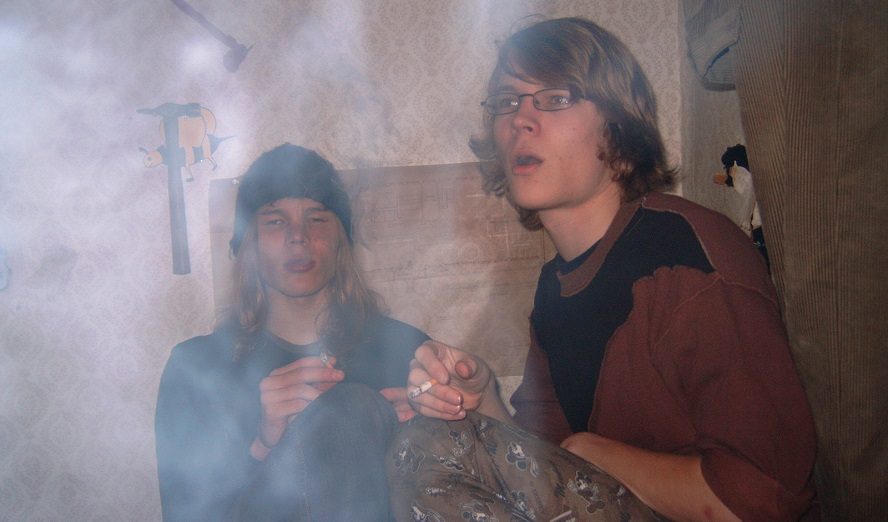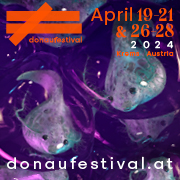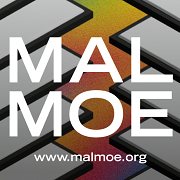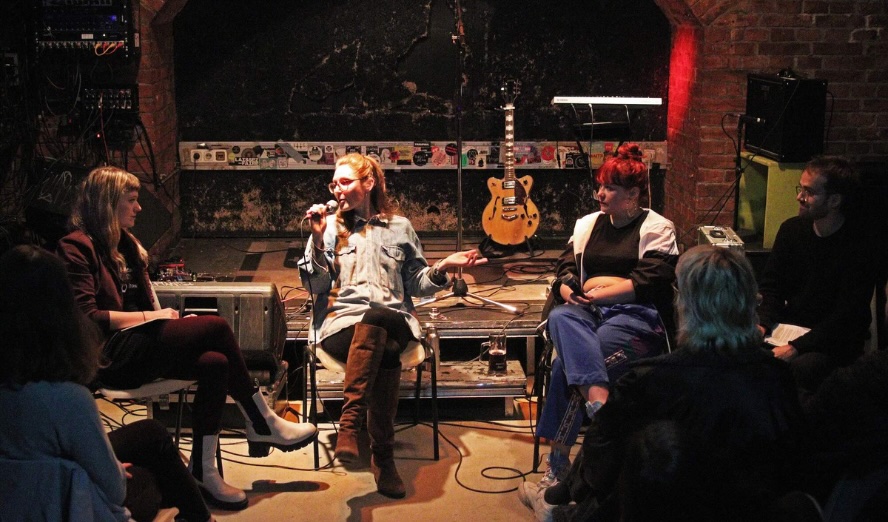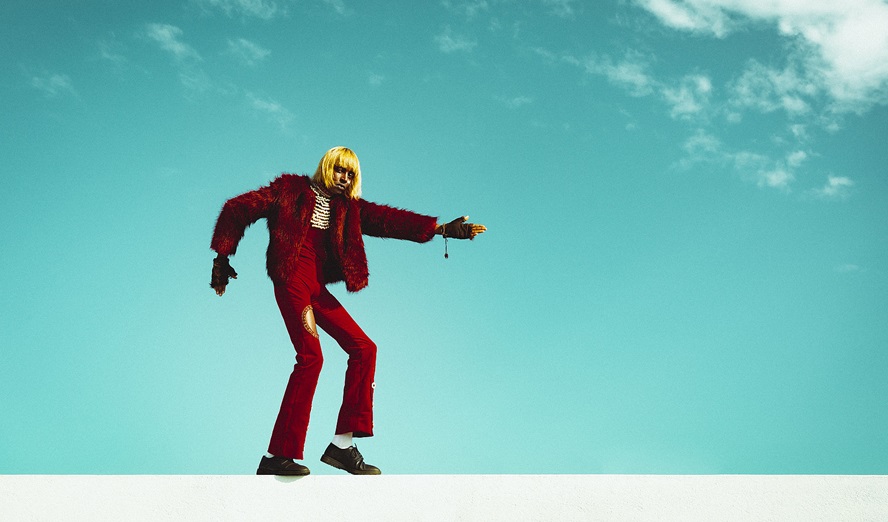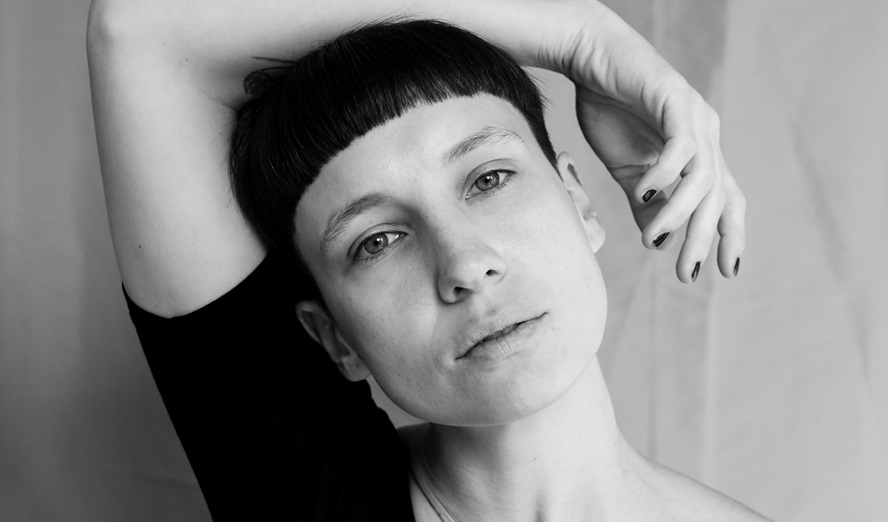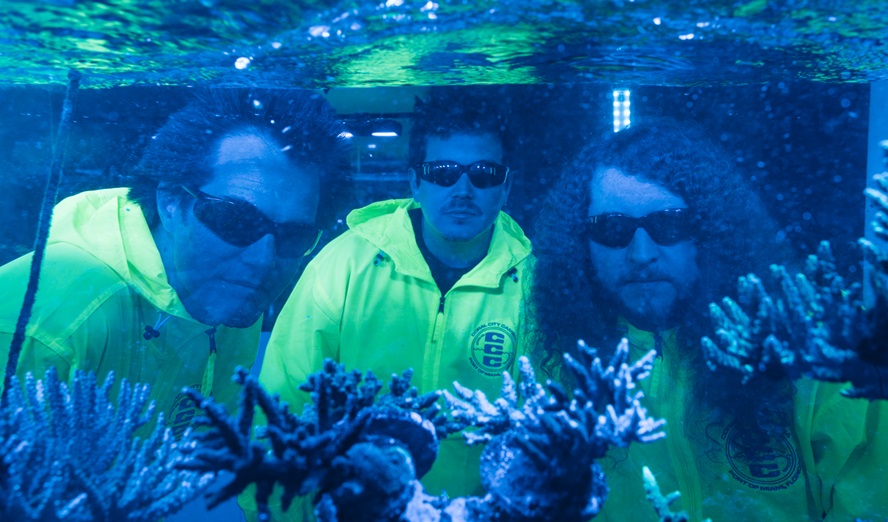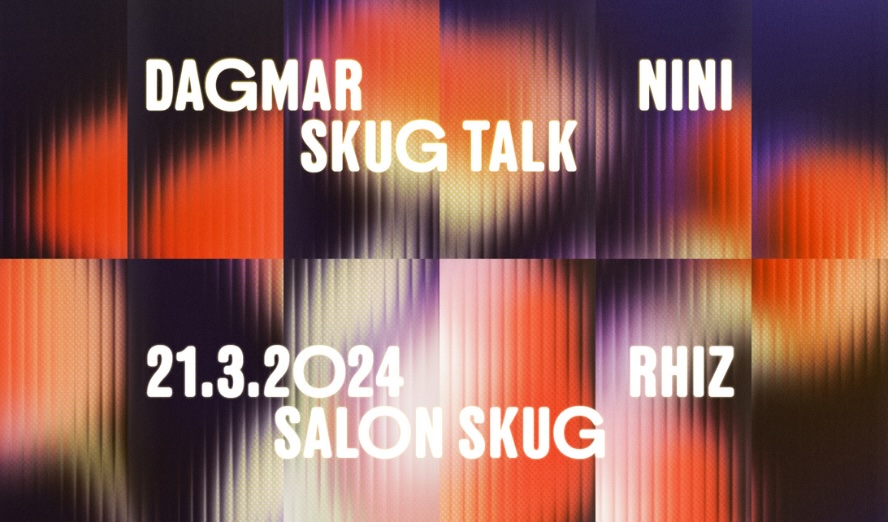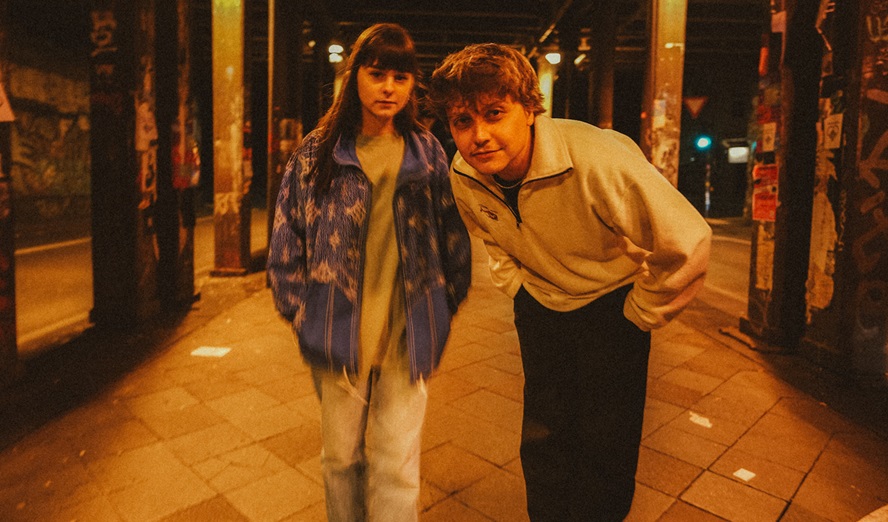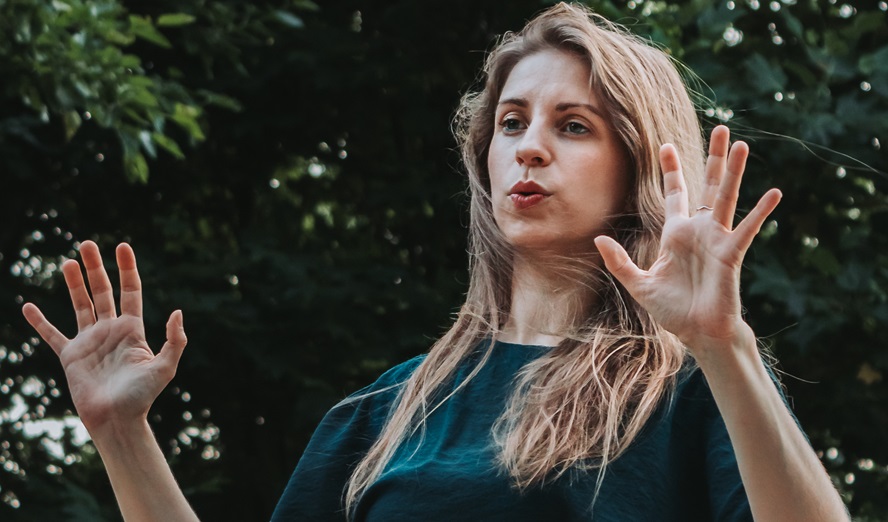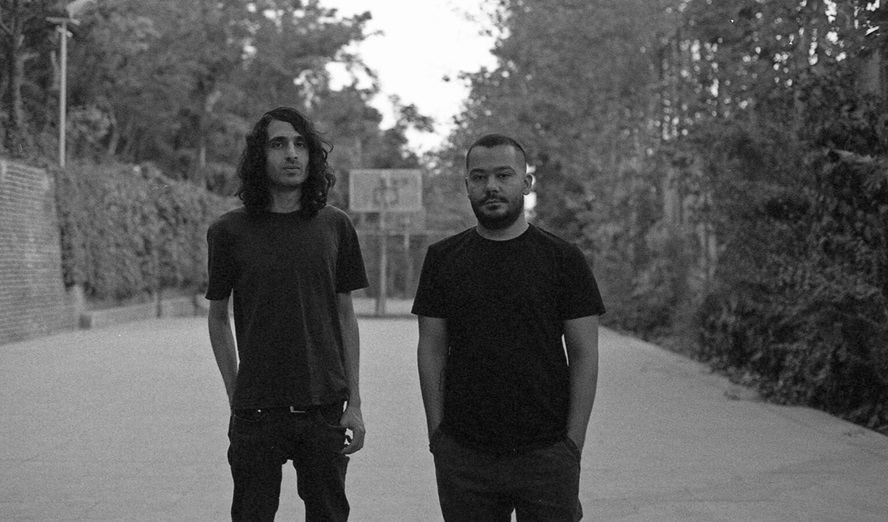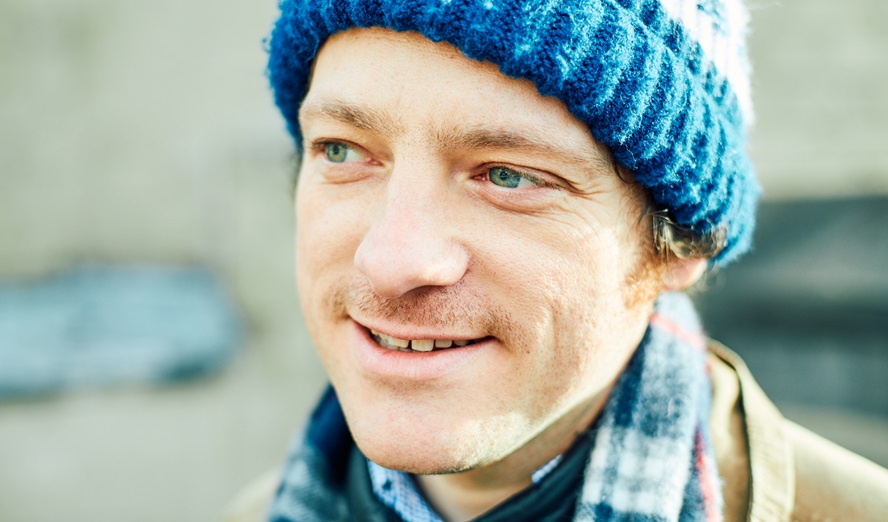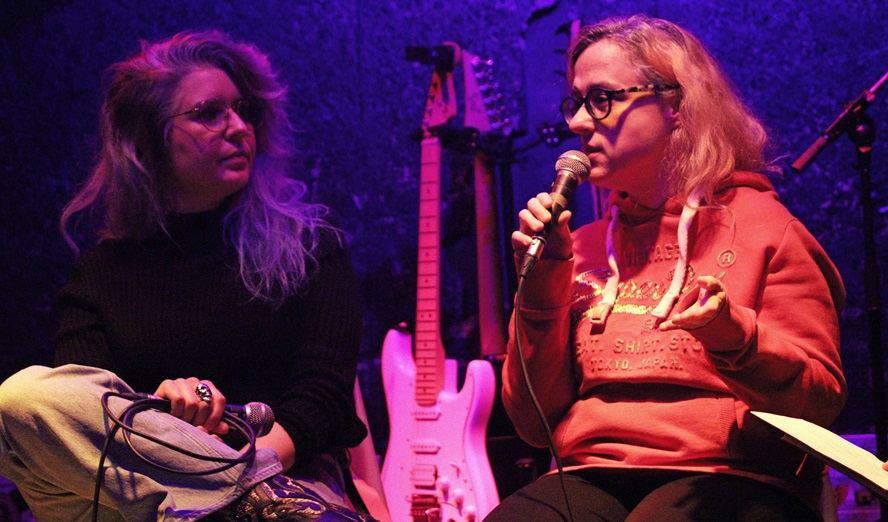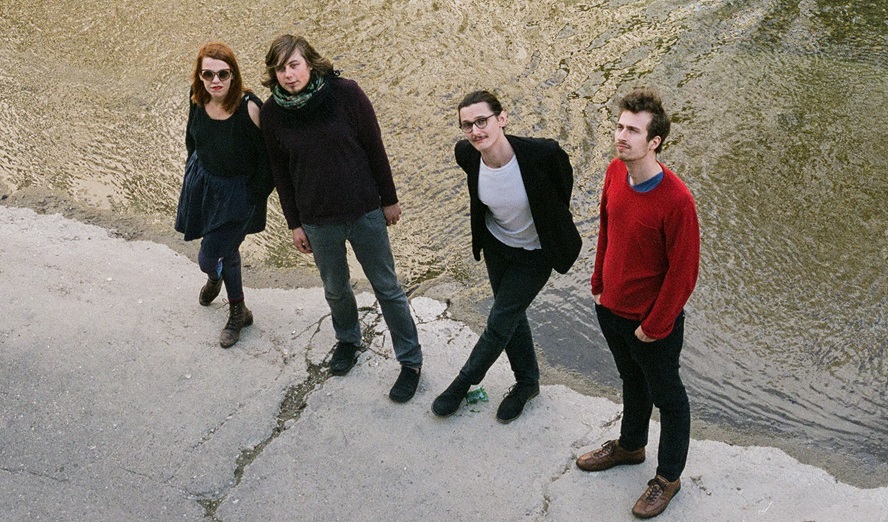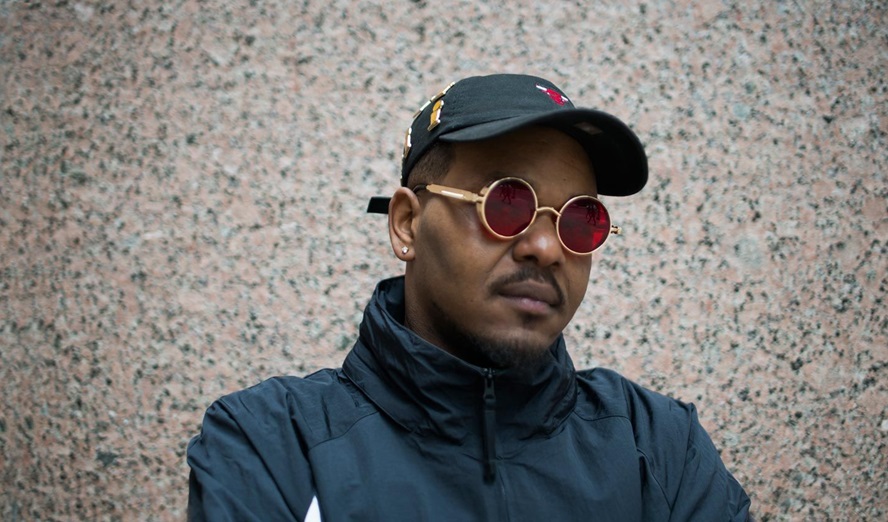Svart Records, the Finnish specialist for doom metal, now releases the complete works of Paavoharju on the Finnish label Fonal (Kemialliset Ystävät, Islaja, Eleonora Rosenholm), the last album having already appeared on the aforementioned label Svart. The first part, the 3-LP-box »Syvyys – The Fonal Years Vol. 1« has already seen a release: It contains everything the group recorded around their debut album, including »Yhä hämärää« itself, as well as all their EPs, 7-inches and tracks from different compilations. The third LP features all previously unreleased tracks.
Soundscapes & wastelands
Paavoharju were a group formed around the brothers Lauri and Olli Ainala from the Finnish Savonlinna, which is (probably not) well known for its annual opera festival. Otherwise it is rather desolate. Between 2000 and 2013 Paavoharju released three albums: In 2005 the great Yhä hämärää (»Still twilight«), in 2008 Laulu laakson kukista (»Song about the flowers of the valley«) and in 2013 the last album »Joko sinä tulet tänne alas tai minä nousen sinne« (»Either you come down here or I come up there«), a rather trip-hop-y work with the rapper Paperi T contributing vocals. The project started as a one-man project, then it was both brothers Ainala who went on to record things as silly and inconsequential as the sound produced by pissing into a Pringles can. Later they would record the hum of a bee in a glass. Soon, half their circle of friends contributed to the project. Brother Olli was also responsible for compositions and melodies, Lauri for lyrics and the ambience. All that seemed necessary for the recording was a camera with a microphone and an ear for sounds of the kind that occurs naturally and circumstantially.
Whether created by nature or man, everything belongs to the overall picture that Paavoharju creates of their surroundings and their experiences, with lots of crackling noises and sounds whose origins are difficult to trace. This is what you can hear on the three albums. Guests include Finnish folk staple and part of their clique Joose Keskitalo, who, with his croaking voice dripping with melancholy, fits perfectly into the mystical ambience of the Paavoharju soundscapes. The recordings themselves feel like ceremonies, documenting places and the yearning associated with them, life in the forest with its spirits, its ponds, its hidden places and forgotten dreams. The echo and the DIY-like recording automatically give the music a depth that harbours all these desires. It is »amateurish« at the highest level: Nothing is overproduced, everything seems natural, expressive and unfiltered, and extremely peculiar. The whole project, with its various, sometimes changing protagonists, is like a documentary of love, friendship and brotherhood/sisterhood among companions of fate. It is a typical project of young people in search of »something«, perhaps the meaning of life in the wasteland, grief and joy. They sought to find this in the forest, in abandoned huts, in homemade saunas or with the help of homemade alcoholic beverages. In one of these huts they even found the hanging corpse of a person who would later reappear in a song.
Across the Paavo-verse
The Finnish band played their way into the Nordic sensibilities of Sami Sänäkkilä, boss of Fonal, when he was given the band’s CD-sampler on a US tour with his own project Es. It was the best thing that could happen to him and the label. Since the recordings work like field recordings from the life of the young group, it’s also not surprising that they confined themselves to a few live concerts and left it at pure listening music for the record. Because there was already enough »to see« in it, the pictures are best created by surrendering yourself completely withdrawn to the distant sounds and let the pictures rematerialize in front of your inner eye. On the DVD »Unien Savonlinna«, released in 2010, you can see what these people’s lives actually look like. In contrast to other band documentaries, this film manages to enhance the obscurity of the observed object even further. Everything is as strange and enraptured as the music itself. A new documentary »Savonlinnan Palvojat« (»Savonlinnas Worshipers«), shot by Lauri is soon to be released. This beautifully made film offers even more impressions of the life in Savonlinna.
The second part of the collection will follow in August, followed by the second album »Laulu laakson kukista«, the EPs »Laulu laakson kukasta« and »Ikkunat näkevät« for the first time in physical form. The third LP contains all kinds of mixed stuff from the Paavo-verse, previously unreleased, alternative mixes and remixes. The first box already proved that this bonus material is not just of interest to collectors, but that each piece is musically splendid and shiny like a beautiful star. The boxes come with interesting liner-notes, which at least lighten the band’s secret a bit, and illustrated with the Paavoharju-typical self-made photos. When it comes to Finnish music, they are to be mentioned first. When it comes to music in general, of course also.
skug took the opportunity to ask Lauri from Paavoharju a couple of questions.
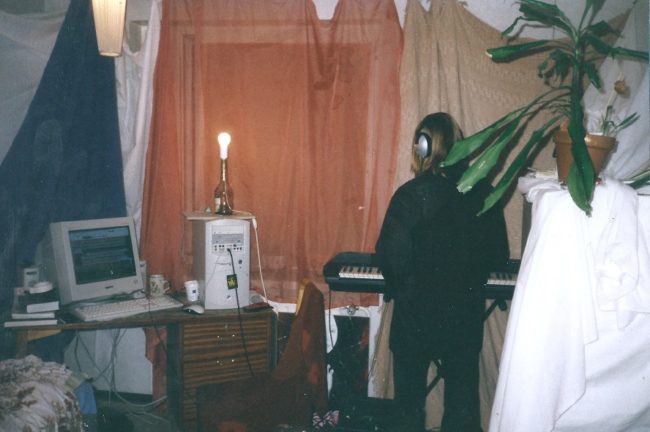
skug: When I think about my childhood and adolescence, the friendships I had were more or less communities of fate. We didn’t have much in common, but we were the only underdogs in our town, so we had to get along and do our projects. Was the Paavoharju-clique comparable to that?
Lauri: No, it wasn’t. I have always liked many different kinds of people. And I still mostly work with those same friends, like Joose. We just finished the second Harmaa Getto-album. Jenni was my first girlfriend, so she became our singer by accident… in a way, but I don’t know her anymore. I saw her last time ten years ago.
It was always hard to see influences in Paavoharjus music. Recently I saw pictures with a sticker of Boards of Canada, an LP of Fonals ES and a bottle of Felix ketchup. Did you have a common ground concerning bands you listened to when recording your albums?
I heard BOC only after we made »Yhä hämärää«, so it wasn’t an influence. I’ve never listened much to music, it’s not really my thing. Other Paavo-people listened to totally different music than others. No common ground. Ragnar Rock and Olli never listened to »experimental music« for example.
I see! So, where did the sound come from? Was it all from trying out, jamming together as a group? Where did the magic come from? How did you find your sound?
Never jamming. I just recorded different things from different people and sewed it all together according to my vision. It was never democratic. Of course, I used a lot of stuff from Olli because we are brothers and his melodies are very good.
Indeed, they are! Could you choose from a pool of sounds and melodies that you already had, or did you ask for certain parts when you felt there was a lack of e.g. a vocal part?
Sometimes I could choose, but very often I asked for new material/recordings.
The last Paavoharju-album was already pretty hip-hop-ish, with the Rapper Paperi T as a collaborator. Finland’s hip-hop seems to be rather dark and experimental, as far as I know. I think of DJ Kridlokk, or the before mentioned Paperi T and Harmaa Getto. Can you say a few words about hip-hop in Finland and how it influenced Paavoharju’s last album?
BOC, Portishead and Gorillaz influenced us more than Finnish hip-hop. But if I have to name some Finnish hip hop artists/bands who might have had some influence I’d say Kaucas, Ruger Hauer, Asa, Julma-Henri and DJ Polarsoul. Most of Finnish hip hop/rap is totally awful shit, worthless excrement!
What would you say it is, that all of you that had a part in Paavoharju had in common?
Savonlinna, religion, AH-kerho. Now it’s only AH-kerho. But that is the best club.
What kind of place is AH-kerho?
It’s not a place, it’s a very large group of friends and also a humour project.
When I think of Finnish humour, I think of Mauri Numminen. What are the characteristics of »Finnish humour«?
I guess some sort of absurdity is a part of Finnish humour. And humour plays a part also in our »new art museum« as well, as it’s »SLUT« – (S)avon(L)innan (U)usi (T)aidemuseo.
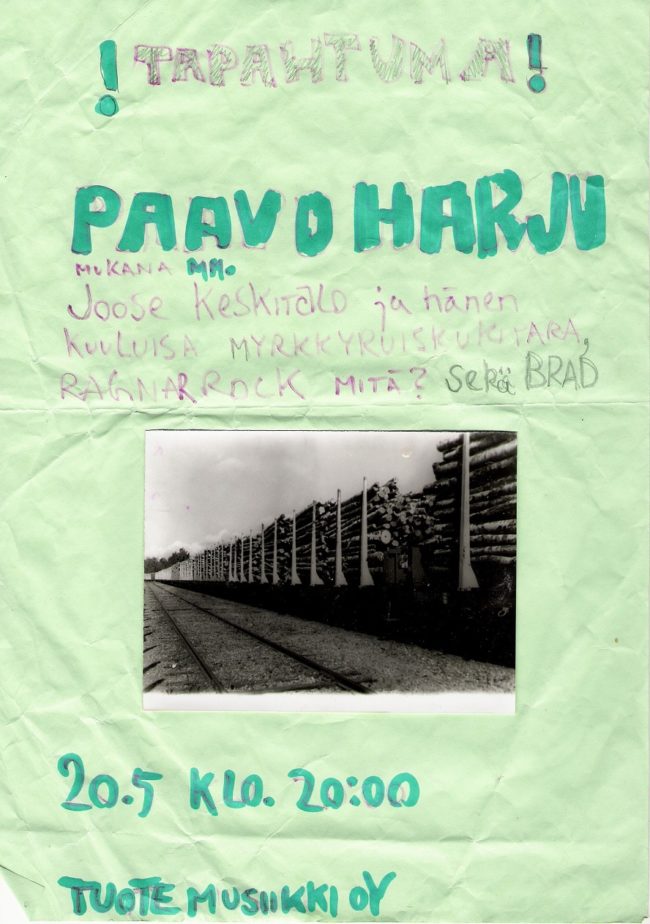
Are you independent artists getting support by the state, or is it still all diy-culture?
In Finland anyone can apply for a grant. But it’s very rare that self-taught people get grants. You must have very good CV and plans for next art projects if you want to get a grant if you are self-taught. I just got a two-year grant and it’s been a super good thing for me. It feels almost surreal to have money now, as I have made everything without money for so long. I have been curating this art exhibition for a couple of years now and I guess it also had some effect.
Do you have any political ambitions? Do you respond to the swing to the right whatsoever?
Savonlinna has changed a lot in the recent ten years. Old buildings have been destroyed and a lot of people have moved away. There are no art galleries anymore and cultural atmosphere is very poor. We are fighting against that crap direction. The town’s centre has been desecrated with new piece-of-shit buildings and stupid people are making this place a true no-place.
So, your art group does work as a kind of corrective for what politics destroyed and offers free space, is that correct?
Free space for artists, yes, as it’s free for them to participate. But it’s only a week or two per year because rents for empty buildings are very high here. It would be great if we had some own permanent space for the event. But it hasn’t been possible… yet. Our goal is to introduce art of a high standard, works of professional artists, to people of Savonlinna.
I guess it is like everywhere else in Finland that people move to the big cities. You still live in Savonlinna and this is obviously a (big) part of your art. Why don’t you live in Helsinki?
We lived in Helsinki for five years when my wife was studying art there, but we moved back to Savonlinna in 2013. Savonlinna is clearly the best place there is.
